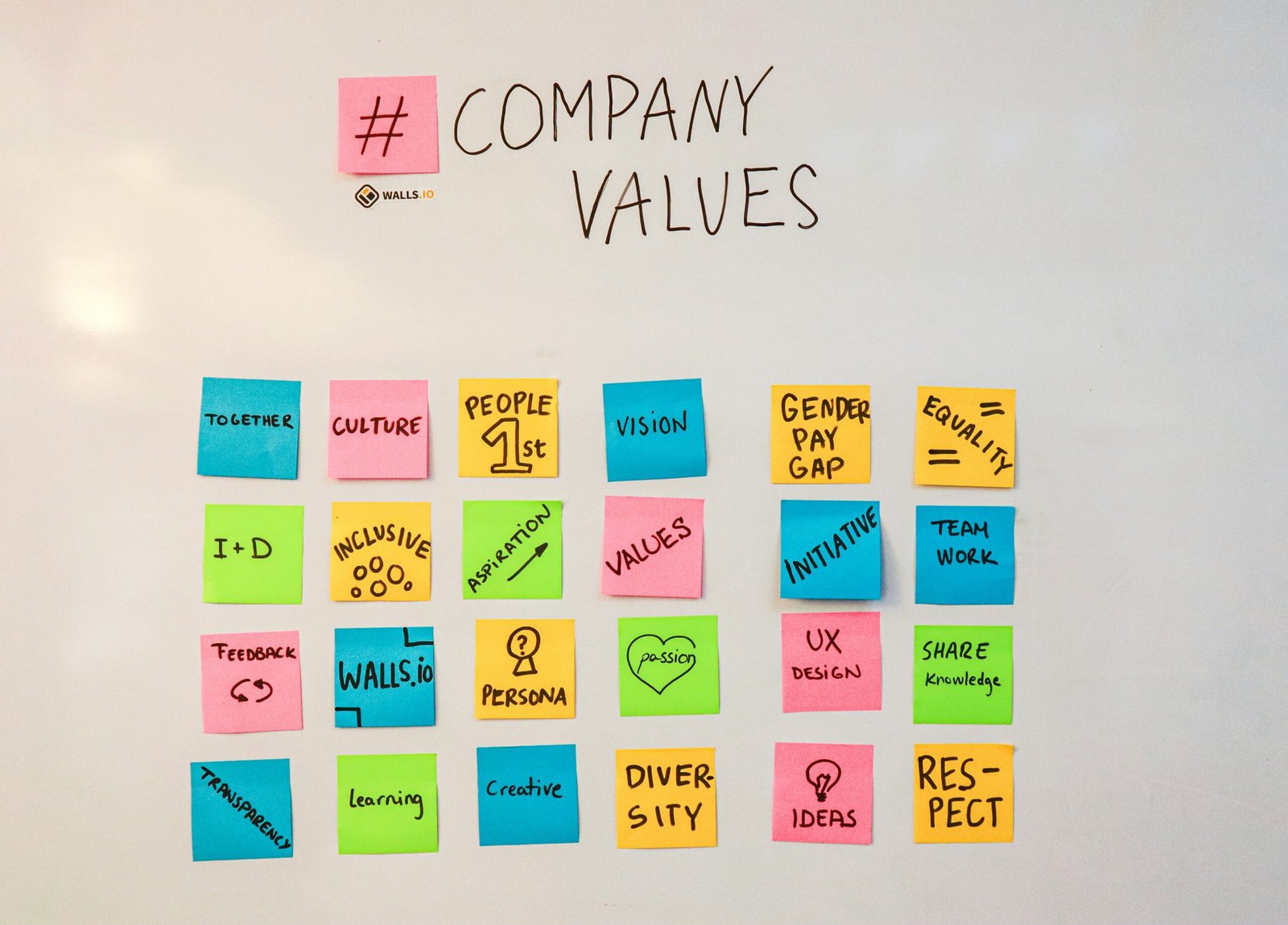Introduction to Workforce Diversity
Workforce diversity refers to the inclusion of individuals from various backgrounds and characteristics within an organization. This concept encompasses numerous dimensions, including, but not limited to, race, gender, ethnicity, age, and sexual orientation. In today’s global economy, workforce diversity has become a pivotal aspect for businesses striving to remain competitive and innovative. As organizations expand their operations across different regions, embracing diversity is essential to reflect the global customer base that they serve.
The significance of workforce diversity is underlined by its potential to fuel creativity and innovation. Diverse teams bring together a variety of perspectives, fostering an environment where unique ideas and solutions can flourish. Research indicates that diverse organizations are more adept at problem-solving and making well-informed decisions because they consider a wider array of viewpoints. Furthermore, promoting an inclusive workplace enhances employee engagement, as individuals feel valued and respected for their contributions and identities.
Current trends in workforce diversity spotlight the necessity of cultivating inclusive workplaces. Many organizations are recognizing the importance of actively recruiting from diverse talent pools, implementing training programs aimed at reducing biases, and establishing equity within workplace practices. Companies are now more frequently conducting diversity audits and setting measurable benchmarks to track their progress in this area. The drive for diversity has not only become a social imperative but also a business one, leading to improved financial performance and a stronger reputation.
Overall, prioritizing workforce diversity can lead to significant benefits for organizations, including enhanced creativity, superior decision-making capabilities, and improved employee satisfaction. As the global economy continues to evolve, companies must remain committed to fostering an inclusive environment that recognizes and celebrates diversity in all its forms.
Key Findings from the Global Workforce Diversity Survey
The recent global workforce diversity survey yielded several critical insights into the current state of representation across various industries and countries. This comprehensive survey aimed to assess progress toward diversity benchmarks and uncover patterns in workforce composition. One of the standout findings is the overall percentage of underrepresented racial and ethnic groups, which continues to lag in many sectors, illustrating a persistent disparity despite ongoing efforts. Specifically, industries such as technology and finance reported only 25% representation of these groups, highlighting significant room for improvement.
Geographical analysis revealed varied outcomes in workforce diversity. For instance, North America demonstrated a more concerted effort toward fostering inclusivity, with approximately 40% of reported employees identifying as part of diverse groups. Contrastingly, regions such as Eastern Europe exhibited much lower figures, averaging around 15%. This disparity suggests that cultural factors, economic conditions, and governmental policies may contribute to diverse workforce dynamics across different areas.
Another notable finding from the survey was the representation of women in leadership roles. Women constituted about 35% of managerial positions globally, with some sectors such as education and healthcare approaching gender parity. However, industries such as engineering and construction showed a stark contrast, with female representation in leadership positions dropping to under 10%. This trend indicates that while some sectors are making strides toward gender equity, others remain significantly behind.
The analysis also revealed challenges faced by individuals with disabilities, who continue to experience considerable barriers in the job market. Only an estimated 20% of respondents from this demographic reported being employed full-time, emphasizing the need for targeted initiatives to enhance inclusivity. These findings underscore the importance of sustained efforts to improve workforce diversity across different sectors, as well as the necessity of regulatory frameworks to support these changes. Overall, the survey provides critical benchmarks for organizations aiming to implement and track effective diversity strategies.
Best Practices for Achieving Workforce Diversity
Achieving workforce diversity is paramount for organizations aiming to harness a variety of perspectives and experiences. Implementing effective strategies ensures a rich tapestry of talent that can drive innovation and improve company culture. One critical approach is to adopt inclusive recruitment techniques. This can be accomplished by broadening recruitment channels to attract a diverse talent pool, such as collaborating with minority-focused professional organizations or attending job fairs that emphasize inclusion. Additionally, utilizing blind recruitment strategies can help mitigate unconscious biases, ensuring that candidates are evaluated based on their qualifications rather than personal characteristics.
Another essential practice involves implementing comprehensive training programs that promote inclusivity and foster awareness among employees. Such programs should cover topics like cultural sensitivity, unconscious bias, and the importance of diversity in the workplace. Providing ongoing training ensures that all staff members understand the significance of diversity and feel equipped to engage in supportive behaviors. Organizations can benefit greatly from creating a safe space where employees can share their insights and experiences, further enriching the workplace environment.
Policies that cultivate a supportive culture are also vital in enhancing workforce diversity. For example, establishing flexible work arrangements can help accommodate the diverse needs of employees. Additionally, developing mentorship and sponsorship programs focused on underrepresented groups can help individuals navigate their career paths more effectively, reinforcing the organization’s commitment to diversity.
Several companies have successfully enhanced their diversity efforts by adopting these practices. For instance, a prominent tech firm noted a significant improvement in employee retention rates after implementing a robust diversity and inclusion training program. Such case studies provide a roadmap for other organizations seeking to improve their diversity benchmarks. By embracing these best practices, companies can create a more inclusive and productive work environment where everyone can thrive.
The Future of Workforce Diversity and Inclusion
As the landscape of work continues to evolve, the future of workforce diversity and inclusion presents both challenges and opportunities for organizations worldwide. One of the most significant drivers of change is technology, which is redefining how companies approach inclusivity. Advanced tools such as artificial intelligence and data analytics can help organizations identify diversity gaps, enabling them to implement more effective strategies that cater to a diverse workforce. Virtual reality and immersive training programs also offer innovative ways to foster empathy and understanding among employees, promoting a culture of inclusion that is vital in today’s global marketplace.
Moreover, the rise of remote work has introduced new dynamics into the conversation surrounding diversity. While remote opportunities can attract a broader talent pool from various regions and backgrounds, they also pose challenges related to social cohesion and workplace culture. Companies must find ways to build connections and engage remote employees while ensuring that diversity remains a priority. This shift necessitates a reexamination of traditional diversity metrics, as organizations adapt their frameworks to encompass employees who are not physically present in the office.
Looking ahead, the evolution of diversity benchmarks is expected to emphasize intersectionality, recognizing the complex interplay of factors such as race, gender, age, and disability in shaping an individual’s experience in the workplace. Organizations will be called upon to develop comprehensive diversity initiatives that address these multifaceted identities, going beyond surface-level representations. By adopting a holistic approach to diversity and inclusion, companies can better reflect the varied perspectives of their workforce, ultimately leading to innovative solutions and improved performance.
In conclusion, for organizations to thrive in the future workplace, a steadfast commitment to diversity and inclusion is imperative. As we navigate these changes, it is essential for companies to continuously monitor their diversity goals, adapting their strategies to align with emerging trends and ensuring accountability in fostering an inclusive environment for all employees.









